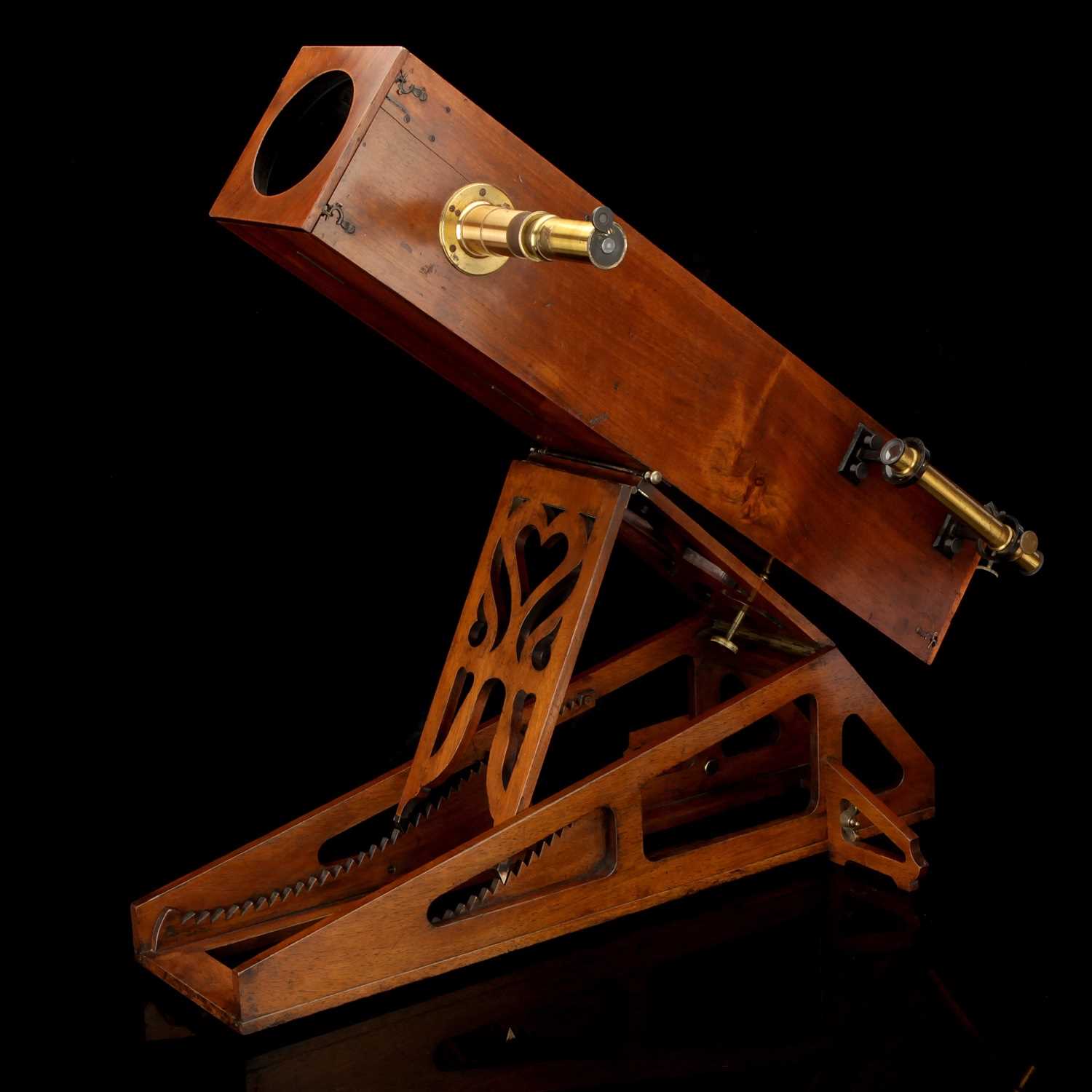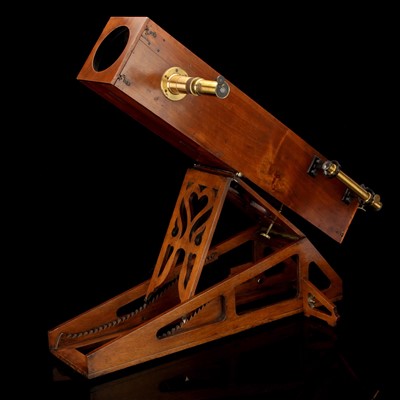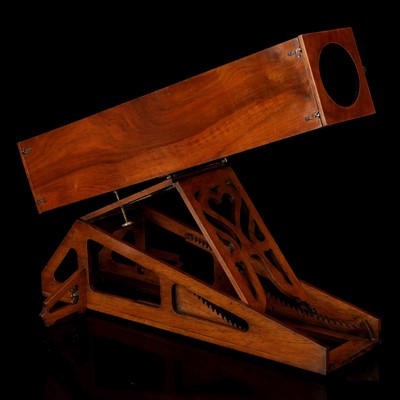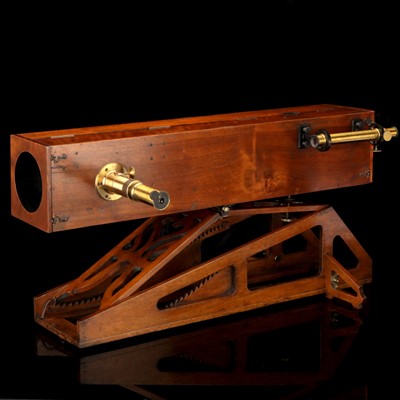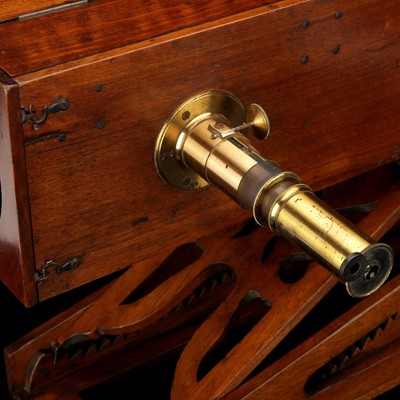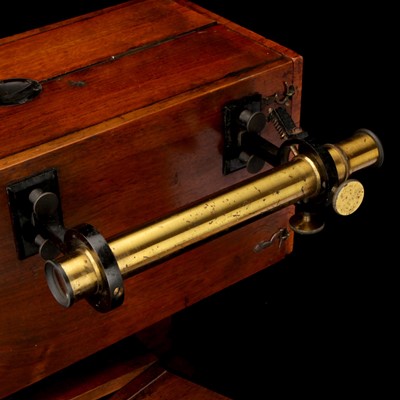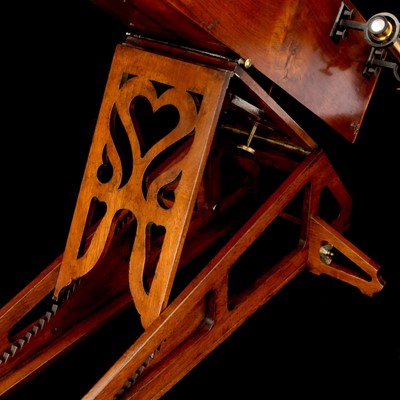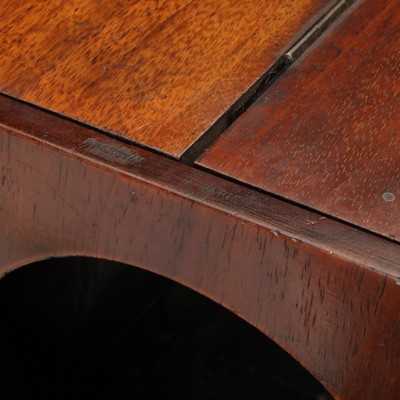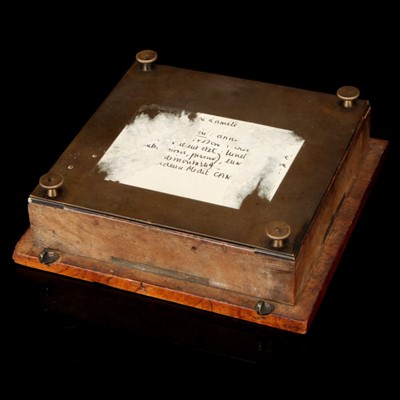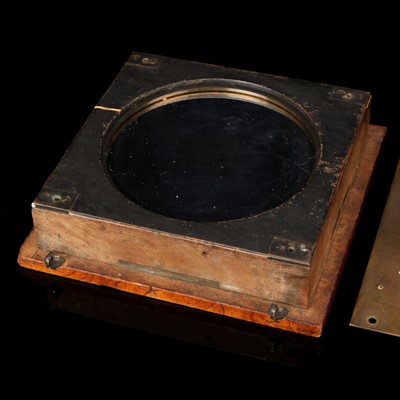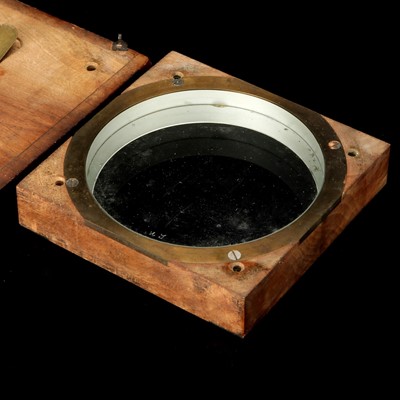21st Sep, 2017 12:00
Fine Instruments of Science & Medicine
An Important Foucault-Secretan Reflecting Telescope
by Secretan a Paris, circa 1858, signed to the front end cover ‘Secretan a Paris’ and engraved on the mirror ‘MS’ (Mark Secretan), folding French polished French walnut square telescope tube mounted with star finder to the rear, achromatic microscope type eyepiece with rack and pinion focus and sun filter to the front, mirror (10.4cm diameter), at rear mounted in a wooden frame with a brass plate to cover with 4 screws, all mounted on a delicate adjustable stand, with altitude set by lifting the telescope, brass followers then rest in notches along two curved racks, two removable side wings for stability, tube 67cm long The Foucault-Secretan Telescope – The World’s first glass reflector One of the problems facing early telescopes was that of Chromatic aberration ( where greater magnification causes light to break down into its component colours). Attempts to get around this were made with reflecting telescopes that used speculum metal as a reflector. Leon Foucault solved this problem with the world’s first silvered glass reflector. Glass mirrors compared to speculum can offer lighter, cheaper, stiffer mirrors that are less brittle. Silvered glass can also be renewed without having to re-grind and polish as with metal mirrors. One of the greatest advantages was Foucault’s method of ‘retouches locales’ or local corrections. This allowed errors in the mirror to be identified and corrected with local polishing rather than polishing the whole surface. This method allowed engineers to produce mirrors of much larger apertures with fast focal ratios. Also of course silvered glass offered a far more reflective surface than that of speculum. This lead to the development of Cassegrain and other telescope systems that are in use today. Foucault’s invention has been called (by Raymond N Wilson, the well known optical engineer) “one of the most important advances in the history of the reflecting telescope.” (Wilson, 1996: 414) This form of telescope was first sold in 1858 and was still showing in catalogues as late as 1887. However, few are known to have survived. A telescope held in a private collection in France has the highest recorded serial number of 42. Interestingly this telescope does not have a serial number.” This form of telescope was first sold in 1858 and was still showing in catalogues as late as 1887. However, few are known to have survived. A telescope held in a private collection in France has the highest recorded serial number of 42. Interestingly this telescope does not have a serial number.
Sold for £6,240
Result plus buyers premium
by Secretan a Paris, circa 1858, signed to the front end cover ‘Secretan a Paris’ and engraved on the mirror ‘MS’ (Mark Secretan), folding French polished French walnut square telescope tube mounted with star finder to the rear, achromatic microscope type eyepiece with rack and pinion focus and sun filter to the front, mirror (10.4cm diameter), at rear mounted in a wooden frame with a brass plate to cover with 4 screws, all mounted on a delicate adjustable stand, with altitude set by lifting the telescope, brass followers then rest in notches along two curved racks, two removable side wings for stability, tube 67cm long The Foucault-Secretan Telescope – The World’s first glass reflector One of the problems facing early telescopes was that of Chromatic aberration ( where greater magnification causes light to break down into its component colours). Attempts to get around this were made with reflecting telescopes that used speculum metal as a reflector. Leon Foucault solved this problem with the world’s first silvered glass reflector. Glass mirrors compared to speculum can offer lighter, cheaper, stiffer mirrors that are less brittle. Silvered glass can also be renewed without having to re-grind and polish as with metal mirrors. One of the greatest advantages was Foucault’s method of ‘retouches locales’ or local corrections. This allowed errors in the mirror to be identified and corrected with local polishing rather than polishing the whole surface. This method allowed engineers to produce mirrors of much larger apertures with fast focal ratios. Also of course silvered glass offered a far more reflective surface than that of speculum. This lead to the development of Cassegrain and other telescope systems that are in use today. Foucault’s invention has been called (by Raymond N Wilson, the well known optical engineer) “one of the most important advances in the history of the reflecting telescope.” (Wilson, 1996: 414) This form of telescope was first sold in 1858 and was still showing in catalogues as late as 1887. However, few are known to have survived. A telescope held in a private collection in France has the highest recorded serial number of 42. Interestingly this telescope does not have a serial number.” This form of telescope was first sold in 1858 and was still showing in catalogues as late as 1887. However, few are known to have survived. A telescope held in a private collection in France has the highest recorded serial number of 42. Interestingly this telescope does not have a serial number.
Auction: Fine Instruments of Science & Medicine, 21st Sep, 2017
